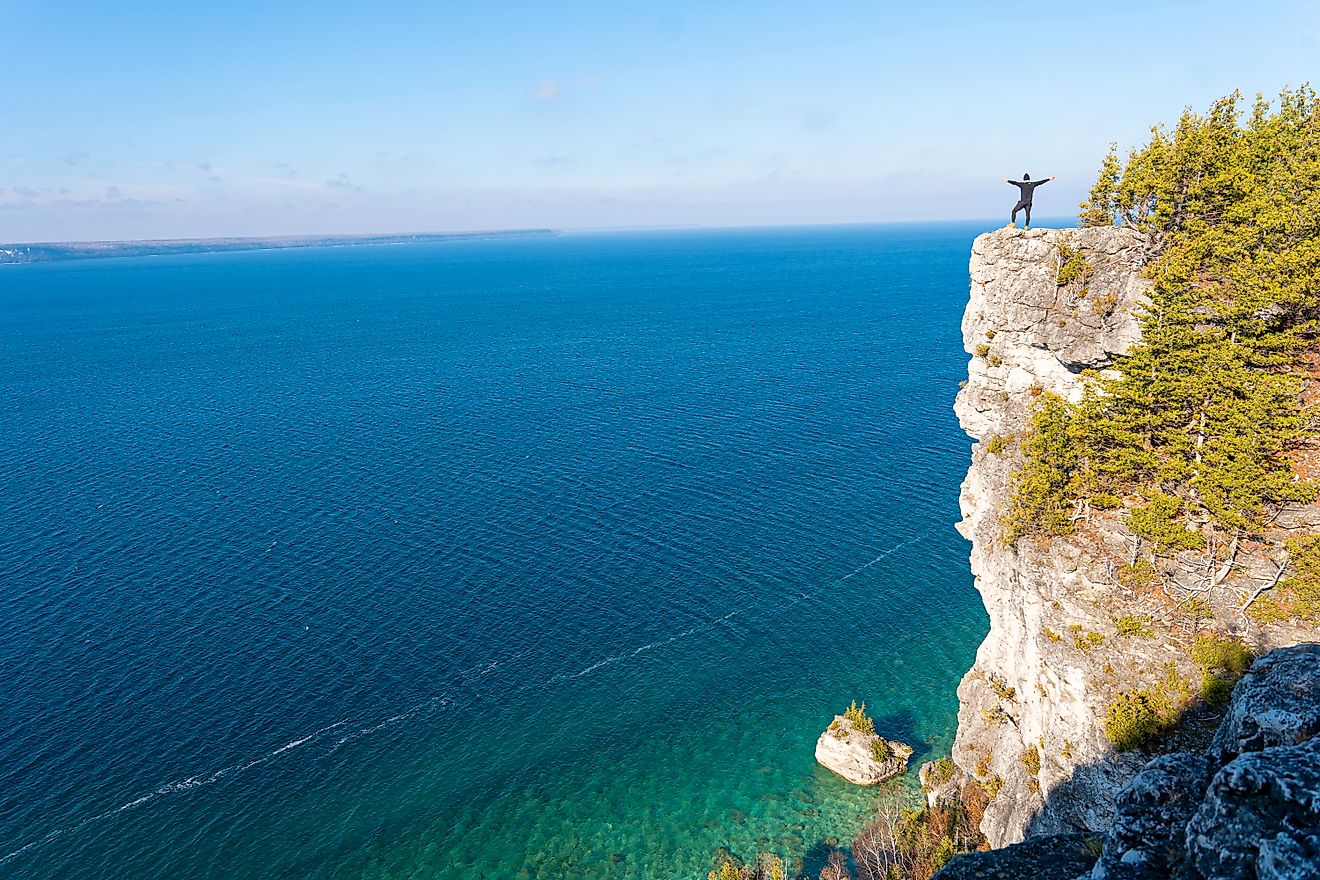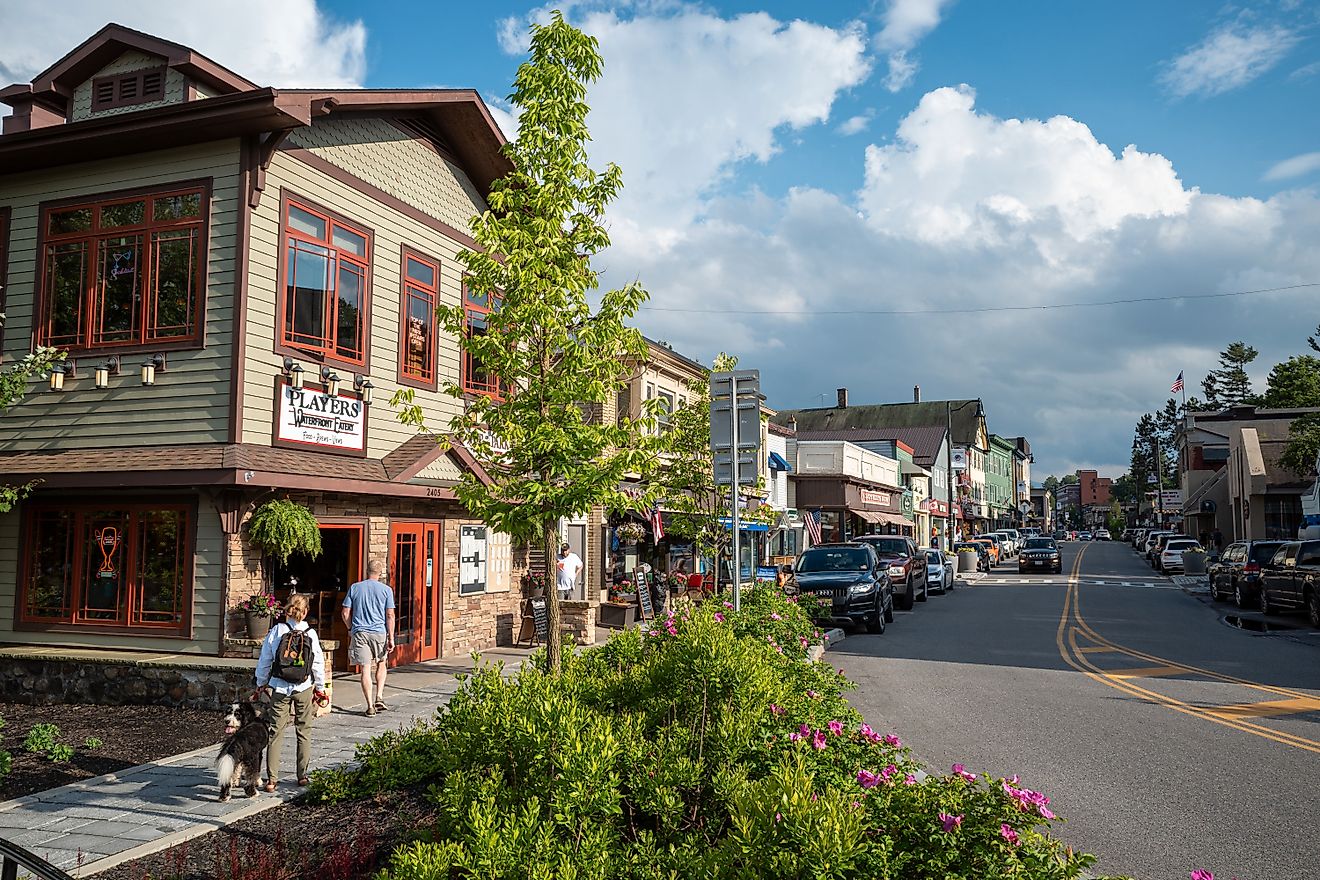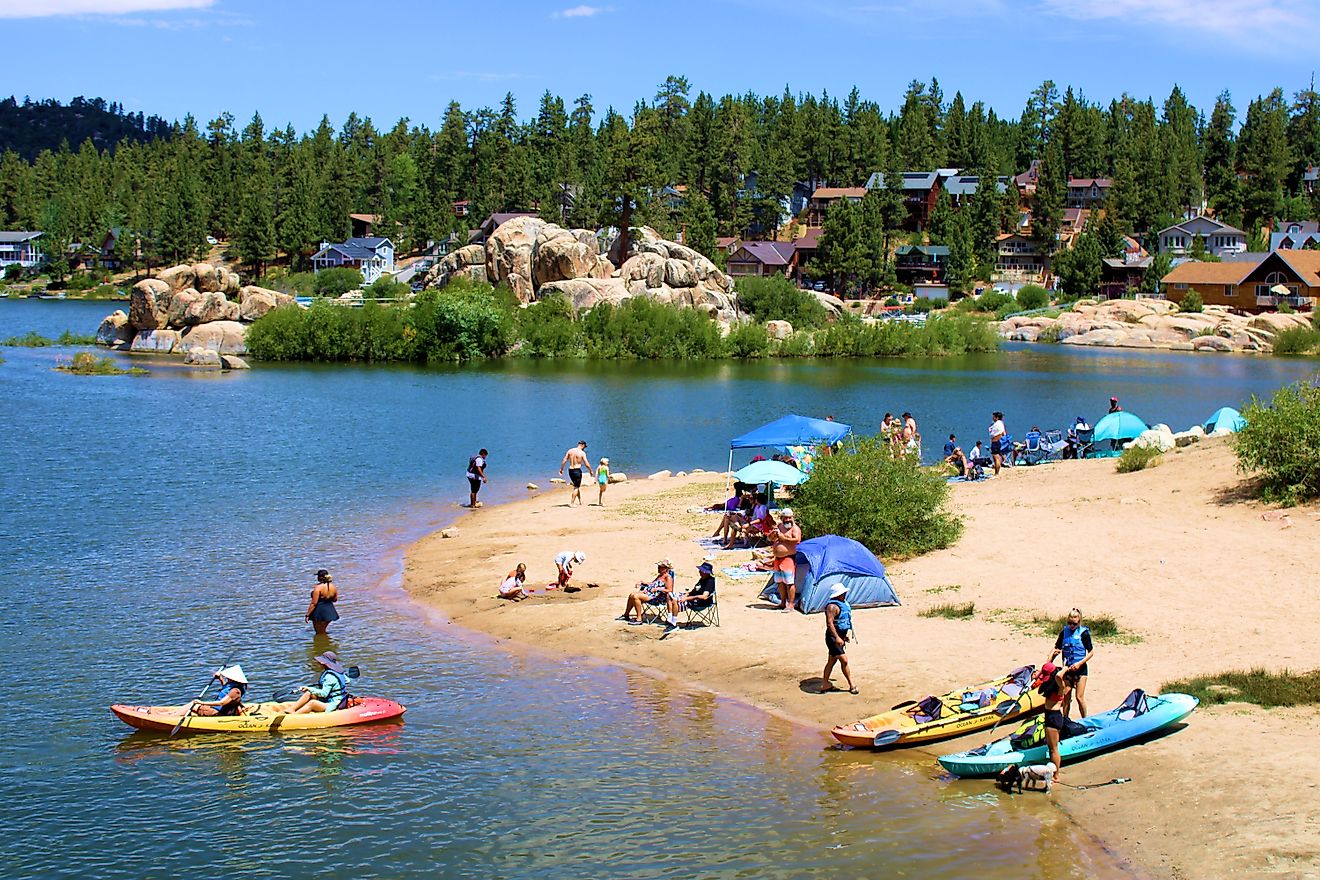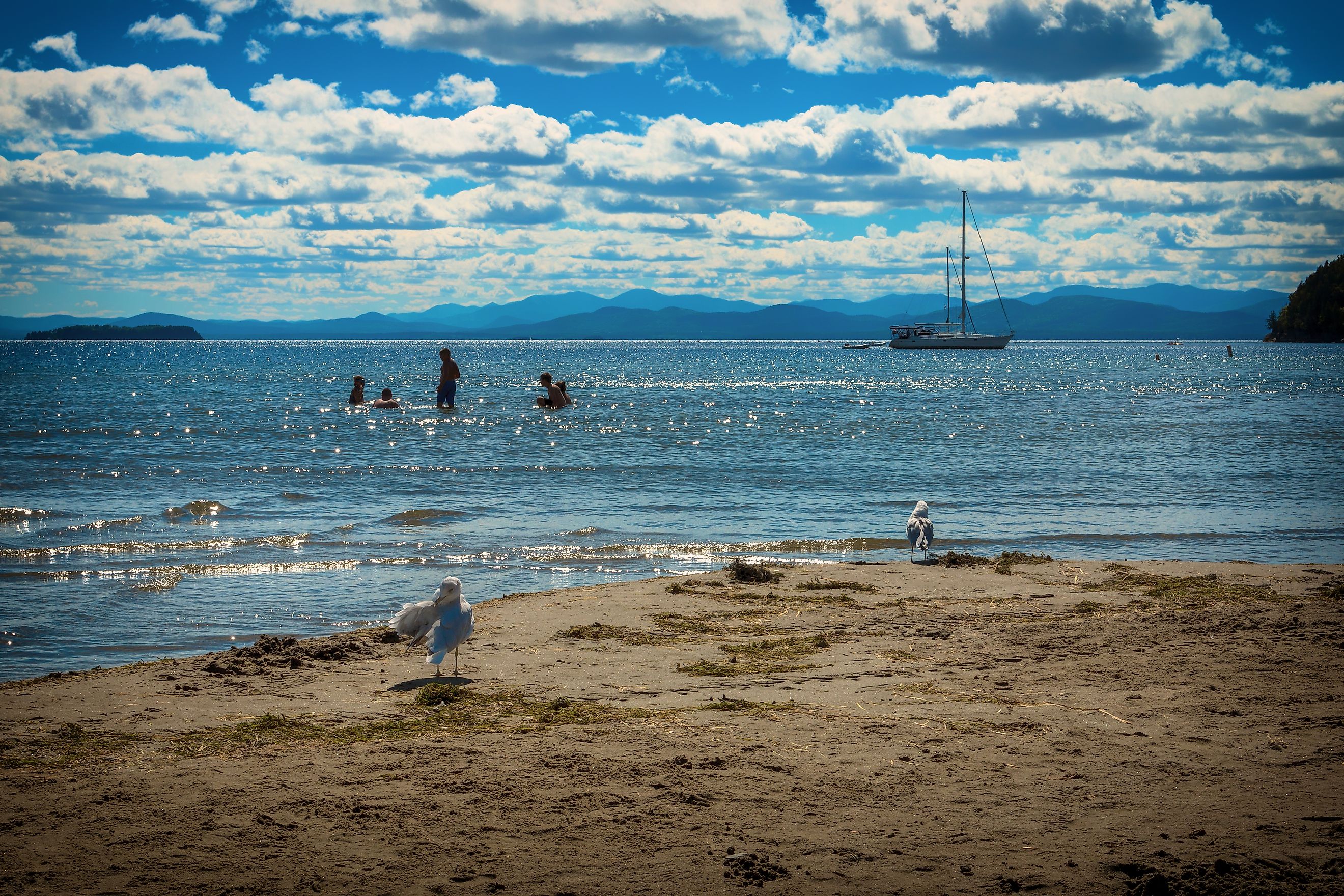
Lake Champlain
Lake Champlain is a natural wonder that stretches across the borders of Vermont, New York, and the Canadian province of Quebec. Spanning 120 miles in length and covering 435 square miles of surface water, it ranks among the largest freshwater lakes in the United States. With a shoreline measuring 587 miles and dotted with 71 islands, Lake Champlain is a scenic retreat that is a vital ecological, historical, and recreational hub with deep roots in American heritage.
Size and Depth
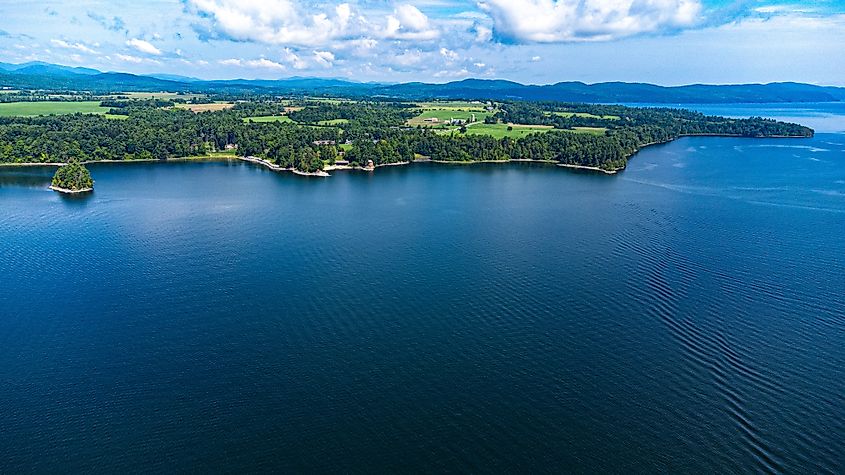
Lake Champlain’s sheer scale makes it one of the most impressive inland water bodies in North America. At its widest point, the lake spans 12 miles across. The average depth is 64 feet, but the deepest point plunges to 400 feet between Charlotte, Vermont and Essex, New York. The lake’s surface elevation averages 95.5 feet above sea level and plays a crucial role in supporting local ecosystems and communities. The Champlain watershed spans a massive 8,234 square miles, impacting vast regions of Vermont, New York, and southern Quebec.
A Source of Life and Livelihood
Lake Champlain provides drinking water to approximately 200,000 people, serving as a lifeline for residents across multiple counties and states. Efforts to preserve the lake’s health are ongoing, with initiatives to protect its wetlands, river corridors, and spawning grounds. These efforts ensure not only the availability of clean water but also the continued thriving of its complex ecosystems.
Birdwatcher's Paradise

The area surrounding Lake Champlain is a haven for birdlife. Vermont alone is home to 318 bird species that live on, near, or rely on the lake. One of the lake’s greatest conservation success stories involves the Common Tern. Once dwindling in numbers, these acrobatic birds have seen a resurgence thanks to habitat protection and community education. In 1988, only 50 nesting pairs remained. By 2013, that number had soared to 275, with nesting sites now safely located on several protected islands.
A Fisherman’s Dream
Lake Champlain is also a top destination for anglers. With over 90 species of fish, the lake has earned its reputation as one of the best bass fishing locations in the Northeast. It was recently ranked sixth by Bassmaster Magazine. Local conservation efforts have helped protect vital spawning habitats in areas like Mill River Falls in Georgia, Vermont, and around Knight Island in North Hero. The lake also supports recreational fishing for trout, salmon, northern pike, and more.
Transportation and Crossings
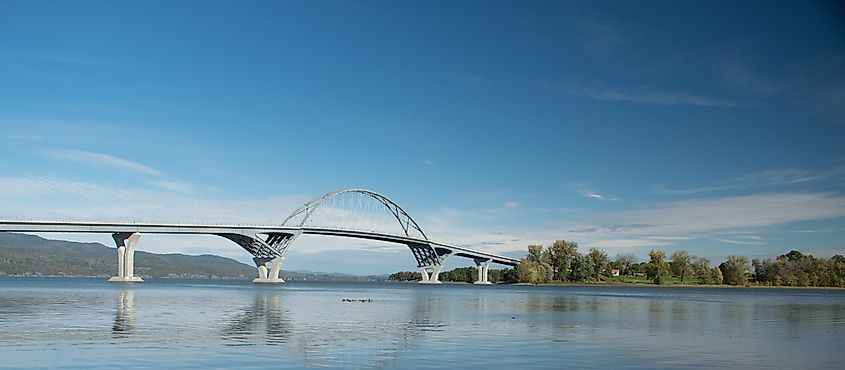
Despite its size, Lake Champlain is highly accessible. Several scenic bridges allow for easy passage across the water. In the north, drivers can cross via Route 2, which includes a mile-long causeway and drawbridge connecting the Champlain Islands to the mainland. The Champlain Bridge links Addison, Vermont, to Crown Point, New York, while the South Bay Bridge connects Whitehall to Dresden, New York.
For a more relaxed journey, three ferry routes operate between Vermont and New York: Charlotte to Essex, Grand Isle to Plattsburgh, and Shoreham to Ticonderoga (seasonal). Kayakers and canoeists also find the lake ideal for paddling adventures.
The Mystery of Champ
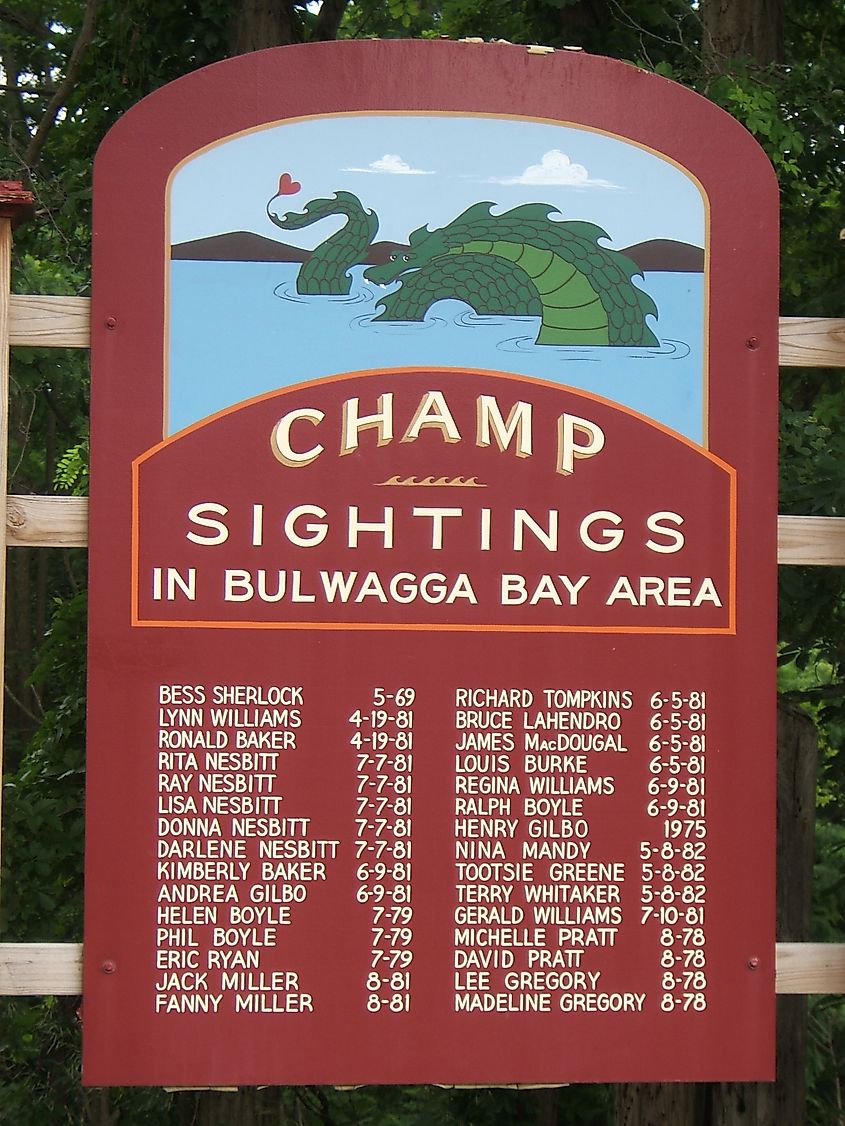
One of Lake Champlain’s most enduring legends is a mysterious creature said to dwell in the lake’s deep waters, named Champ. Often likened to Scotland’s Loch Ness Monster, Champ has been part of local folklore for centuries. Although scientific evidence is lacking, eyewitness accounts persist. Some speculate Champ could be a relic from a prehistoric time, possibly resembling a plesiosaur or whale. Whether fact or fiction, the legend draws curious visitors hoping to catch a glimpse of the elusive creature.
Geological Marvel: Fossil Reef and Ice Age Origins
Lake Champlain is home to the oldest known fossil reef in the world, dating back 450 to 480 million years. This ancient formation is a geological treasure that gives scientists clues about prehistoric marine life. The lake also has roots in the last Ice Age. As glaciers retreated, their immense weight carved the landscape, allowing a temporary inlet from the Atlantic Ocean called the Champlain Sea to form. This inland sea was mostly freshwater due to glacial meltwater. As the land rebounded, the sea receded, leaving behind the Lake Champlain we know today.
A Waterway Steeped in History
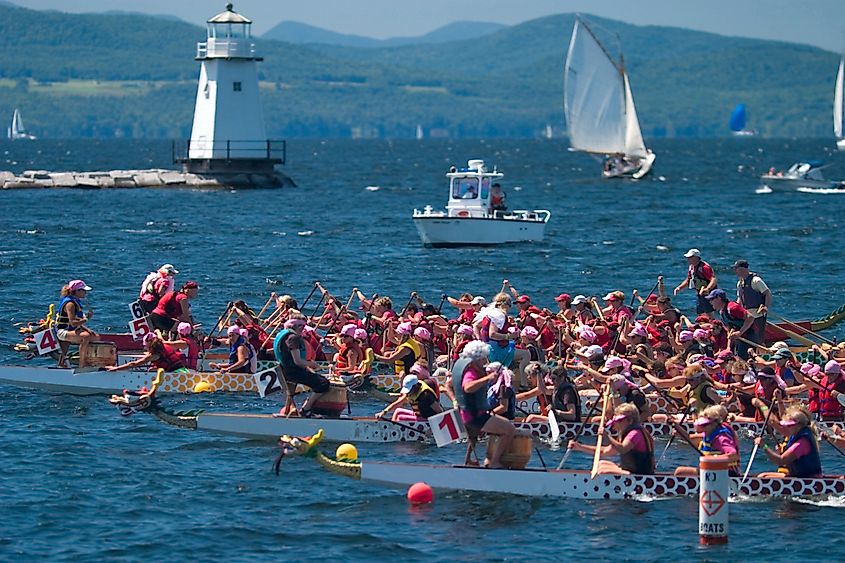
Lake Champlain has played a pivotal role in American history. Named by French explorer Samuel de Champlain in 1609, the lake served as a strategic route during both the Revolutionary War and the War of 1812. During these conflicts, the lake was crucial for transporting troops and supplies between the colonies and Canada.
The shipbuilding industry flourished in places like Vergennes, Vermont, particularly during the War of 1812. In the post-war years, the lake transitioned into a center for tourism, especially after World War II, when recreational travel became more accessible to the average American family.
A Shared Resource Across Borders
Lake Champlain is unique in that it spans two US states and one Canadian province. Although the majority of the population within the Champlain Basin resides in the United States, Vermonters make up about 72 percent of the US population living in the basin. This gives Vermont residents a special role in preserving the lake’s future. However, the task of conservation is a collaborative one that involves stakeholders on both sides of the border.
A Vital Economic Engine
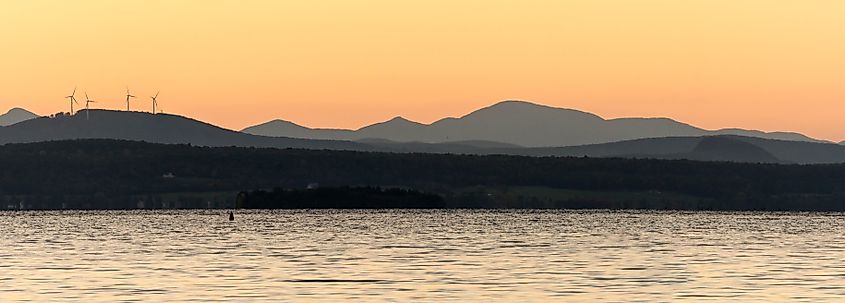
Beyond its ecological and recreational significance, Lake Champlain is also a powerful economic force. Tourism, fishing, boating, and waterfront real estate all contribute to the region’s prosperity. The lake’s scenic beauty draws visitors year-round, supporting local businesses and encouraging stewardship among the people who live and work along its shores.
Conclusion: The Legacy of Lake Champlain
Lake Champlain is more than just a picturesque body of water; it is a living ecosystem, a vital resource, and a symbol of the Northeast’s natural and cultural heritage. From its ancient origins and storied past to its vibrant wildlife and community importance today, Lake Champlain continues to inspire awe and appreciation. Whether you are birdwatching, casting a line, crossing one of its bridges, or searching for the legendary Champ, the lake offers something for everyone and stands as one of America's most intriguing freshwater treasures.

